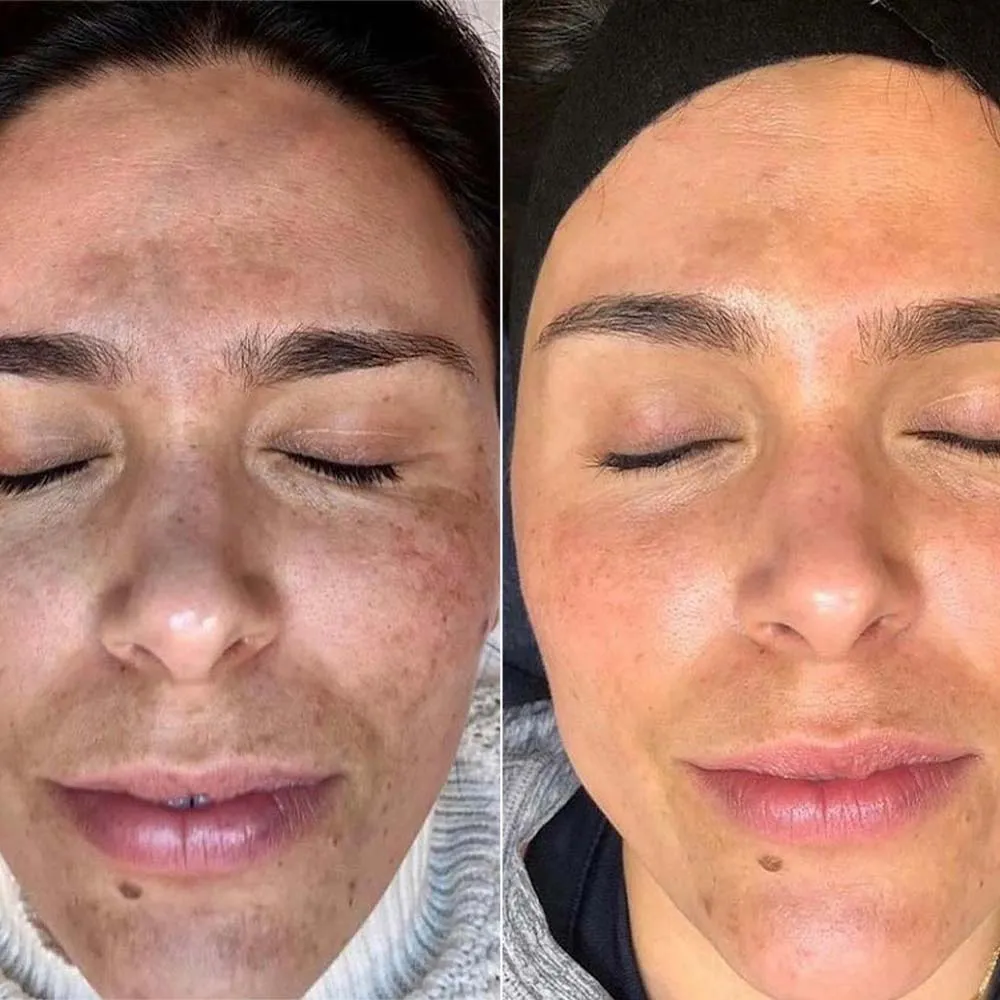
Are you familiar with this amazing skin treatment that enhances the appearance of your skin and you’re interested in trying it? However, you may have some concerns about the terms “chemical,” “peel,” and “skin.” How does it actually work? Is the treatment safe? Will it harm your skin? What exactly does a chemical peel accomplish? Let’s delve into these questions.
How Do Chemical Peels Work? A chemical peel refers to a cosmetic procedure that eliminates the outermost layer of your skin. This process involves the application of chemical agents that purposefully cause damage to the surface of your skin, prompting it to peel off.
By shedding the outer layer, you effectively remove various imperfections such as scars, fine lines, and hyperpigmentation. This aspect is often what deters many individuals from considering a chemical peel.
Not gonna lie, the peeling phase may not be the prettiest, but once it’s completed, you’ll realize it was absolutely worth it! Not only does the specific concern you targeted diminish, but your entire skin is also renewed with a fresh, healthier layer.
Chemical peels are classified into three categories: light, medium-depth, and deep peels. The appropriate category for you depends on your skin type, the nature of the issue you’re addressing, and the depth of the problem. Let’s explore the effects of each category of chemical peel.
Light Chemical Peels Light chemical peels are suitable for minor and superficial imperfections. These peels utilize acids such as AHA (glycolic acid, lactic acid, malic acid) and BHA (salicylic acid) to exclusively target the outermost layer of the skin.
Since the layer being removed is thin, the flaking is minimal, requiring little recovery time. However, the results are remarkable! The skin becomes smoother, radiant, and healthier. Light chemical peels can offer some improvement in acne and discoloration, as well as help reduce signs of aging.
Medium-Depth Chemical Peels Compared to light chemical peels, medium-depth peels are more intensive. They penetrate partially into the second layer of the skin, known as the dermis, making them suitable for addressing deeper imperfections.
The three most commonly used agents for medium peels are TCA (trichloroacetic acid), Jessner’s solution (a combination of salicylic acid, resorcinol, lactic acid, and ethanol), and glycolic acid.
Medium-depth peels yield more noticeable results compared to light peels, but the associated side effects and risks are also slightly more pronounced.
Deep Chemical Peels Deep chemical peels are highly intensive treatments and are considered serious dermatological procedures. It is crucial to seek the expertise of a licensed professional and trust your aesthetician to avoid any health risks and potential long-term damage to your skin—this applies to other types of chemical peels as well.
Deep peels are specifically employed for deeply rooted imperfections. They involve the removal of a thick layer of skin, often utilizing Phenol. Consequently, the healing process is lengthy, requiring meticulous aftercare, and the risks and side effects are significant. However, the results from this treatment can be incredibly long-lasting, lasting up to 10 years.
So, What Benefits Does a Chemical Peel Provide for Your Skin?
Alright, so chemicals are utilized to eliminate one or more layers of your skin, but what happens next? How does your skin appear afterward? What specific issues does it address?
Well, the outcomes vary depending on the type of peel required for your condition. In addition to targeting your specific concern, all chemical peels result in smoother, healthier, and revitalized skin.
However, if you’re seeking more than just a radiant and refreshed complexion, chemical peels can also assist in:
-Diminishing fine lines and wrinkles
-Treating acne or acne scars (you can learn more about Chemical Peel for Acne Scars)
-Addressing sun damage, including unwanted freckles and sun spots
-Correcting hyperpigmentation
-Managing melasma
-Reviving dull skin
-Reducing the appearance of enlarged pores
-Minimizing stretch marks
-Fading scars
And the list goes on. Chemical peels offer a range of benefits that extend beyond these examples.
What Else Do I Need to Know?
One of the most frequently asked questions about chemical peels is ‘Is it safe’? Because you can want the amazing results, but still not be ready to expose your skin to something that might ruin it. The short answer is yes, this procedure is safe. But there is an if – If done by a certified and licensed professional!

